Alford and Sutton Tramway
History
The Alford and Sutton Tramway was promoted and built by the Scottish railway contractor W B Dick, who together with John Kerr, formed Dick, Kerr & Company (in 1883), a concern which would go on to become a significant and well-known tramway constructor and manufacturer. Quite why such a successful businessman chose to spend time and effort on building a tramway that ran from a small market town (Alford) in a predominantly agricultural county (Lincolnshire), to a small fishing port and seaside resort (Sutton), is anyone's guess, especially in view of the area's population, which amounted to barely 4000 souls.
Although powers to build the line and incorporate the Alford and Sutton Tramways Company were granted on the 12th August 1880, no progress whatsoever was made — at least in terms of construction — during the next two years, a situation which forced Dick to apply for an extension to the powers. Construction work eventually commenced in December 1882, though for some reason the effort appears to have been rather half-hearted, progress being slow and the work produced being of a lamentable standard, which following the visit of the the Board of Trade's inspector, necessitated considerable remediation. The tramway finally opened on the 2nd April 1884, but had a less than auspicious start, many passengers being left stranded at Sutton until 10 o'clock in the evening, and then having to endure a two-hour journey back to Alford in goods wagons.
The line was just over seven miles long, running northwestwards from the Great Northern Railway's Alford Station to the Jolly Bacchus Inn at Sutton, the entire distance along roads. It was unusual in two respects: firstly, in being built to the incredibly small gauge (for a street tramway) of 2ft 6ins; and secondly, for running along the crown of the road rather than to one side of it. The latter was to prove an expensive mistake, as not only did the tramway's grooved tracks constantly fill with detritus, leading to derailments, but it also meant that the A&STCo was effectively liable for maintaining the entire road, which before its opening had been no more than a series of rural tracks.
The death knell did not take long to chime, as it quickly became apparent that Sutton would, sooner rather than later, be connected to the railway network. This duly took place on the 1st November 1886 with the opening of the Sutton and Willoughby Railway, which inevitably siphoned off much of the tramway's Sutton trade (particularly holidaymakers).
Two years later, on the 10th August 1888, the tramway company was sold to the newly formed Great Northern, Lincoln and East Coast Railway Company, which subsequently changed its name — on the 31st January 1889 — to the Great Northern Tramways Company Ltd. The major shareholders in the new company were E D Oppert and Company of London; quite why they thought it was a good idea to invest in a tramway that ran from nowhere to nowhere — relatively speaking — along country lanes, and which was presumably suffering from ruinous railway competition, is completely unclear. The line struggled on through 1889 until the 15th November when a liquidator was appointed. It is not clear when the last tram ran, but probably in early December 1889.
Uniforms
Although the Alford and Sutton Tramway only plied its trade for just over five-and-a-half years in the late 1880s, the photographic record is surprisingly rich.
The idiosyncratic nature of the Alfred and Sutton appears to have extended beyond its gauge and general operation to its drivers' attire. Rather than the usual steam footplate clothing (cotton jacket etc.) several photos exist which show at least one driver wearing a double-breasted tunic with two rows of five buttons (non-metal), looking for all the world like a uniform, but almost certainly self-purchased. Conductors wore smart but informal attire (long, single-breasted, frock-style coats and trousers, shirt and tie). As far as headgear is concerned, drivers wore soft-topped peaked caps or bowlers, whilst conductors simply wore the fashionable headgear of the day, i.e., a bowler hat; no badges or insignia of any kind were carried on either the clothing or the hats/caps.
Given the small size of the Alfred and Sutton enterprise, and the fact that it appears to have been run much like a railway, it is highly unlikely that inspectors were ever employed.
Further reading
For more information on the tramway, see: 'Alford and Sutton Tramways, 2nd Edition', by George Dow; privately published (1984).
Images
Steam tram drivers and conductors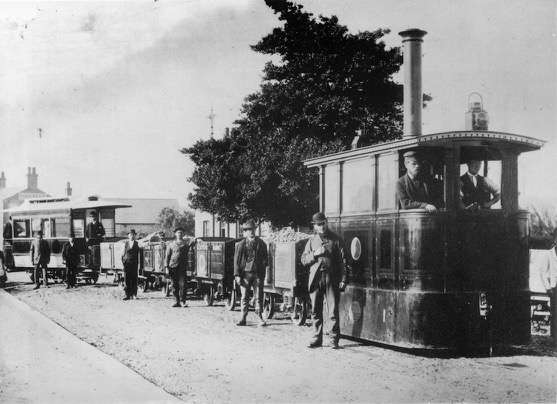
A rather unusual shot for a UK steam tramway — a mixed passenger and goods service. The engine (No 1) is a Black Hawthorn & Company product of 1883, and given its relatively good condition, the photograph was probably taken in 1884 or 1885. Photo courtesy of the Tramways and Light Railway Society, with thanks to David Voice.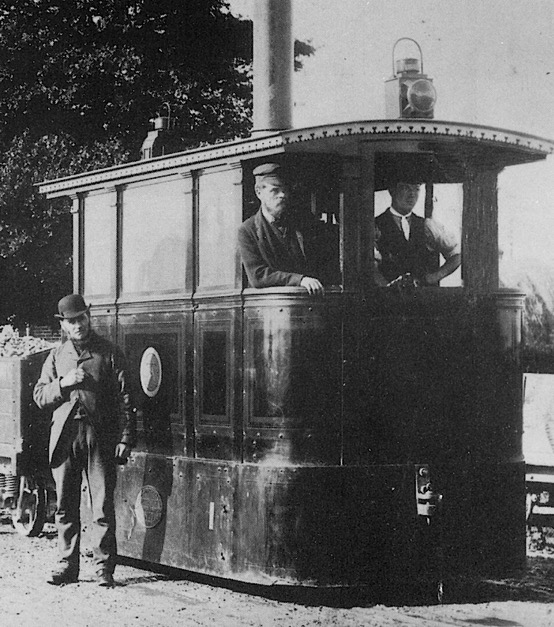
An enlargement of the above photograph showing the driver and stoker. Both men are wearing informal attire.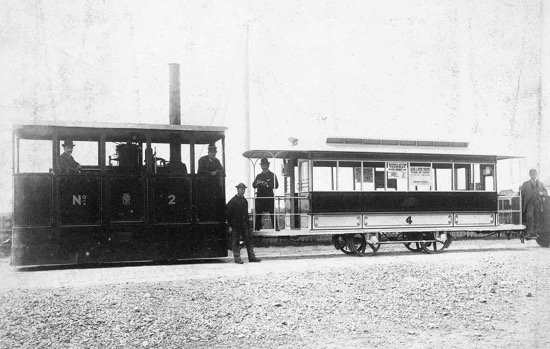
The crew of Steam Tram No 2 (a Merryweather product of 1883) pose for the camera with Trailer No 4 — photo probably taken in 1884 when both vehicles were new. Photo from the Geoff Lumb Collection, courtesy of Trevor Preece.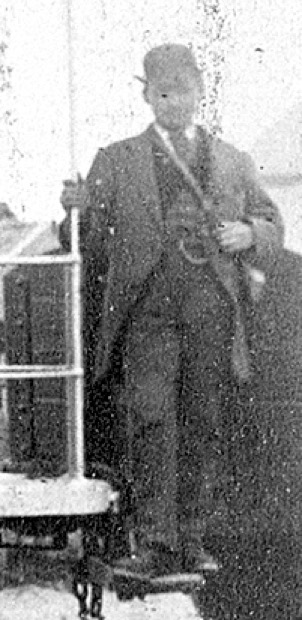
An enlargement of the above photograph showing the conductor. Although of poor quality, it clearly shows that the individual depicted is wearing informal attire and a bowler hat.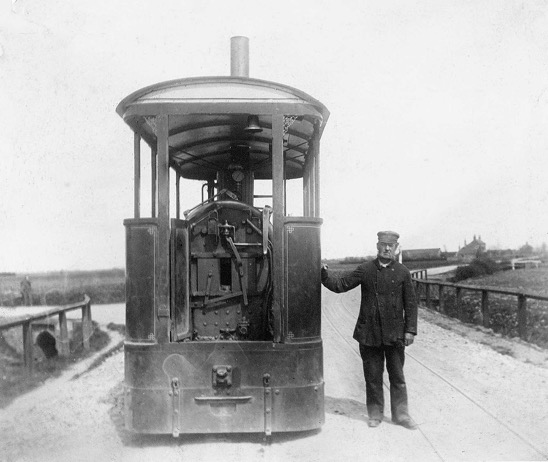
A superb photo of Engine No 2 and its driver — photo undated, but probably taken in 1885 or 1886 as the engine still looks to be in good condition. Photo from the Geoff Lumb Collection, courtesy of Trevor Preece.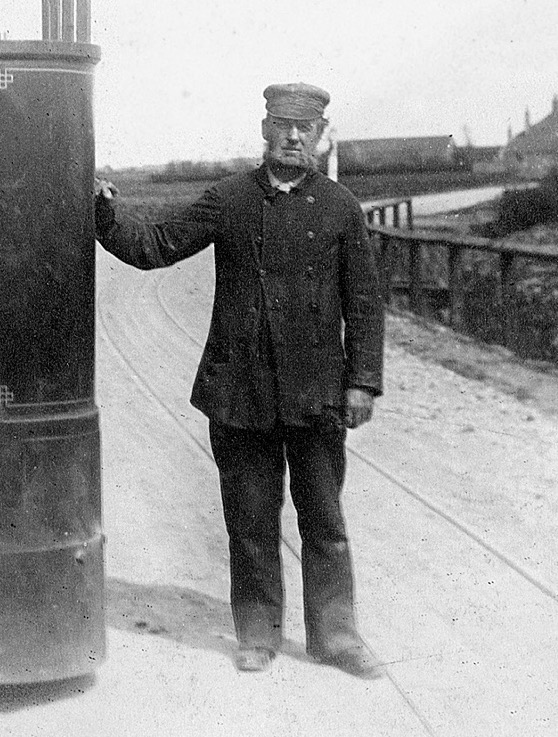
An enlargement of the above photograph showing the driver. What initially looks like a uniform is in fact an informal double-breasted jacket, along with a soft-topped peaked cap.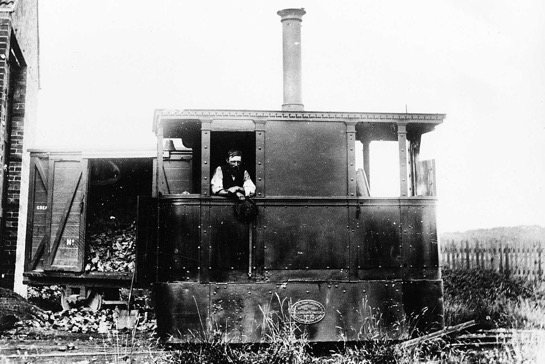
Engine No 1 and driver outside what appears to be the engine shed at Alford — photo undated, but probably taken quite late in the tramway's life (late 1888 or 1889) as the coal van behind the engine has 'Great' painted on it, presumably standing for Great Northern, Lincoln and East Coast Railway Company or Great Northern Tramways Company Ltd. Photo courtesy of David Gladwin, with thanks to Trevor Preece.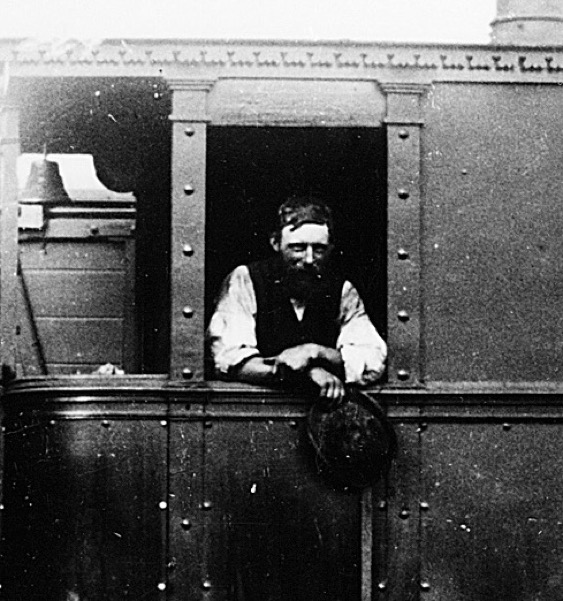
A blow-up of the above photo showing the driver. He is wearing informal attire and a bowler hat (in his hand).